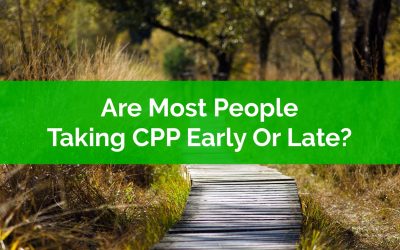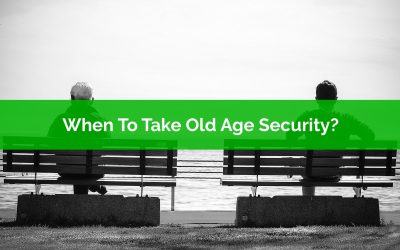Congratulations! You’re on the waitlist!
We will e-mail you before the bootcamp launches for an exclusive preview.
Check out our latest blog posts…
Are Most People Taking CPP Early Or Late? Some Real Numbers From Real Retirees
Are most people taking CPP early or late? Delaying CPP can have many advantages (and a few downsides). Delaying CPP to age 70 can see monthly CPP benefits increase by over 220% vs benefits taken at age 60.
Delaying CPP provides a lifelong inflation adjusted pension, and for those with no defined benefit pension this can be very appealing.
But as it turns out, very few people choose to delay CPP to age 70.
So, if delaying CPP has so much appeal, why aren’t more people choosing to delay?
In the analysis below we’ll see that the vast majority of people are taking CPP at or before the age of 65. Using these statistics for CPP starting age we’ll see that very few people choose to delay CPP past age 65 and only a very small percentage choose to delay all the way until age 70.
If delaying CPP to age 70 has so many advantages, why are most people choosing to take CPP early?
“Should I Delay OAS?” Four “Soft” Factors To Consider
“Should I delay OAS”?
This a common question that gets asked during a financial plan. Along with CPP payments, OAS payments will increase the longer you delay them. This creates a big incentive to delay both OAS and CPP.
Delaying OAS until 70 can lead to monthly OAS payments that are 36% higher than at age 65. This can make delaying OAS, as well as CPP, very appealing to soon-to-be retirees.
That being said, even though receiving the maximum OAS benefit sounds appealing as a retiree, the decision to delay OAS needs to include many factors, some of them are “soft” factors that have nothing to do with the financial breakeven.
OAS benefits are significant for retirees. A retiree with over 40-years in Canada between age 18 and 65 can expect to receive over $7,000 per year in OAS benefits. A couple can receive over $14,000. This makes OAS benefits an important component of any retirement plan.
But OAS benefits have one unique factor that makes the decision to take OAS at 65, or delaying OAS until 70, much more difficult, and that is the clawback. Officially called the OAS recovery tax, this clawback is 15% of every dollar earned above a certain threshold. Above this threshold, the OAS recovery tax takes $0.15 from every $1 of income until OAS is gone.
When we consider the impact of this recovery tax it may make delaying OAS very appealing in certain situations. In this post we’ll look at some of the soft factors to consider when deciding whether or not to delay OAS.
When To Take Old Age Security? Should You Delay OAS To Get The Maximum OAS Benefit?
When is the best time to take Old Age Security (OAS)? Should you delay OAS to get the maximum benefit? Or should you take OAS as early as possible?
Old Age Security is a government retirement benefit paid to seniors over the age of 65. Unlike Canada Pension Plan, Old Age Security payments come from government revenue. It has nothing to do with contributions. It has everything to do with how long you’ve been in Canada. And unlike CPP, it can be “clawed back”.
It can also be substantial. Old Age Security is worth over $7,000 per person per year if you receive the maximum benefit. For a couple that’s over $14,000 per year in retirement income. This increases with inflation every 3-months.
And like CPP, OAS payments increase the longer you delay it. The earliest OAS can start is at age 65, but for every month you delay OAS payments the benefit increases by 0.6%. If you choose to delay for a full year your OAS benefits would be 7.2% higher. If you choose to delay the full 5-years to age 70 your OAS benefits would be 36% higher!
Delaying OAS may seem appealing, but should YOU delay OAS to get the maximum OAS benefit in retirement?
Perhaps not, but it depends on your situation.



